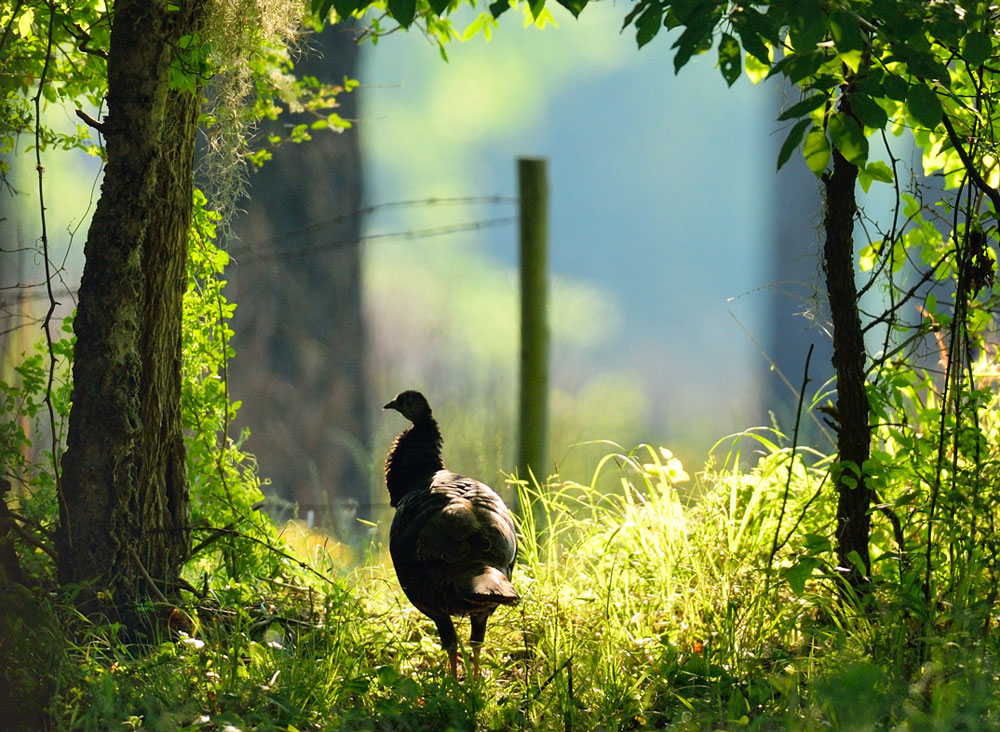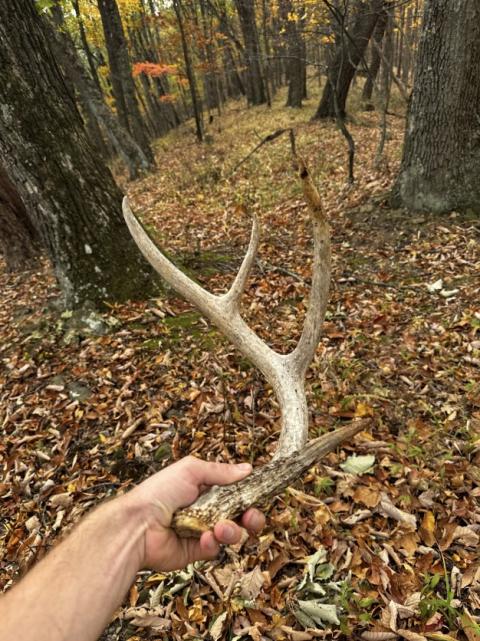The “winter to spring transition” and its effect on flock dynamics
Text and photos by Tes Randle Jolly
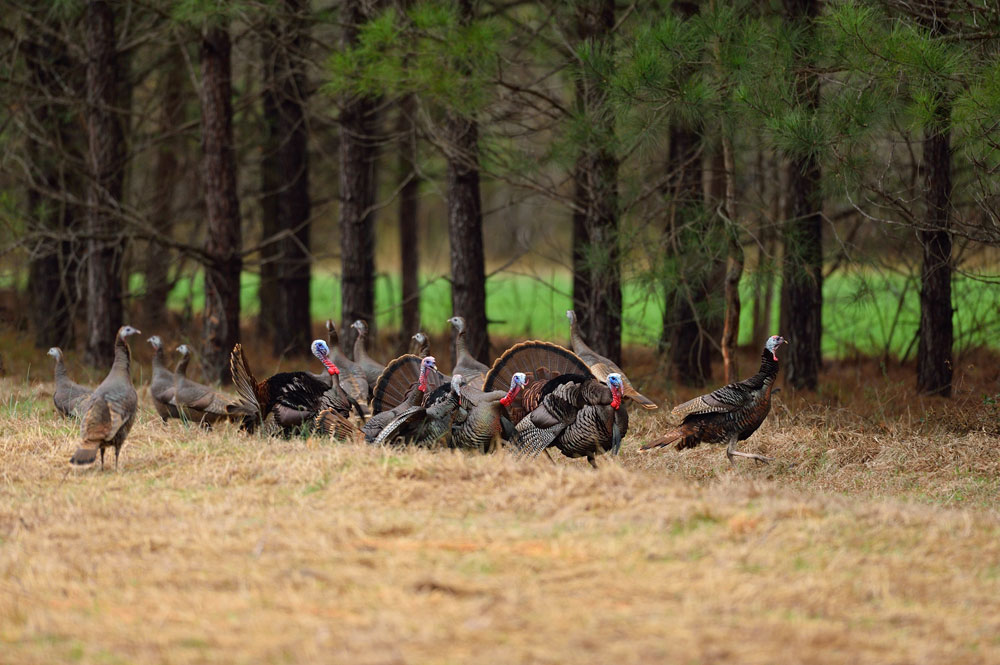
Whether wild turkeys have survived winter’s bitter cold, a balmier southern version, or something in between, Nature’s promise of winter’s end triggers big changes in turkey flocks. Habitat and forage needs also evolve as the next season approaches and turkeys prepare for every turkey hunter’s happiest time of year—spring!
This column discusses how turkeys alter their social behaviors, flock dynamics, and ranges in preparation for the spring breeding and nesting season. Important insight is included from wild turkey expert and researcher, Dr. Michael J. Chamberlain, PhD., Terrell Distinguished Professor of Wildlife Ecology and Management at Warnell School of Forestry and Natural Resources at the University of Georgia.
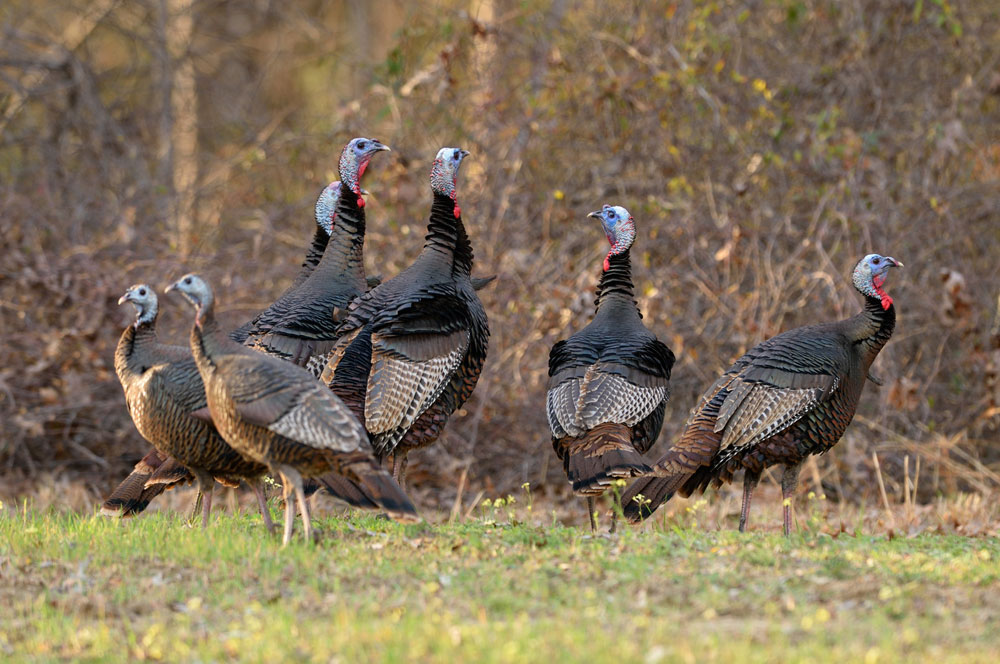
1. Dynamics of Winter Flocks
Wild turkey flocks are typically largest during winter months when they gather in areas that provide safety, adequate food and roosting areas. Toms, jakes and hens separate into flocks but groups overlap especially as winter gives way to spring. What does my favorite age class (the teenagers of turkeydom), do with themselves during the winter? In my anecdotal observations, jake groups tend to hang out in close proximity to hen flocks. Interestingly, they may display dominance behavior near the hens as shown here with a lifted head and raised wing butt feathers conveying a “Hey, I’m bigger than you,” posture.
“IT’S ABOUT CREATING A LEGACY FOR ALL FUTURE GENERATIONS. SUBSCRIBE TODAY!”
Dr. Chamberlain: Winter flocks are segregated by sex, with hens hanging out in large flocks and toms usually in smaller flocks. Jakes will also form flocks, but they will often closely associate with hen flocks. It’s not unusual to see hen flocks being followed by groups of jakes, or for groups of jakes to show up in the same foraging areas being used by hens. As winter ends, all of those flocks will begin to dissolve as birds end up in social groups.
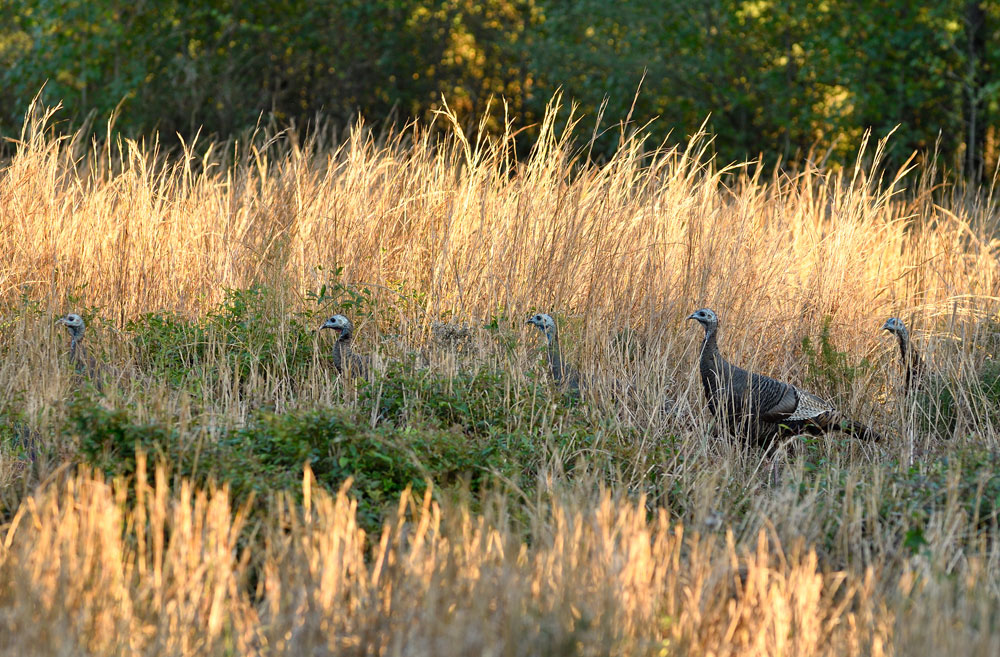
2. Large Flocks Become Social Groups
From a hunter’s perspective, late winter into early spring is one of the most enlightening times for observing turkey behavior. Rowdy dominance battles of all age classes are a regular occurrence. Turkey flocks split into smaller ones that move about and may be seen in new areas. Hen groups cover ground searching for favorable nesting and brooding habitat. Trail cameras are useful at this time to gather information when turkeys could show up anywhere.
Dr. Chamberlain: As spring approaches, we suddenly see many changes in how wild turkeys structure themselves and interact with each other. The large winter flocks dissolve into smaller groups that leave areas they used all winter, often shifting their home range quite a distance (even miles). All winter, flocks of hens focused on food resources and safety - with spring approaching, they begin looking for areas with suitable nesting habitat and quality foraging resources. This shift in behaviors is one reason we have turkeys appear to vanish overnight from properties where we’re seeing them, or suddenly show up out of the blue where they haven’t been seen for months.
“IF YOU LOVE WILDLIFE AND WANT TO IMPROVE HABITAT SUBSCRIBE TODAY!”
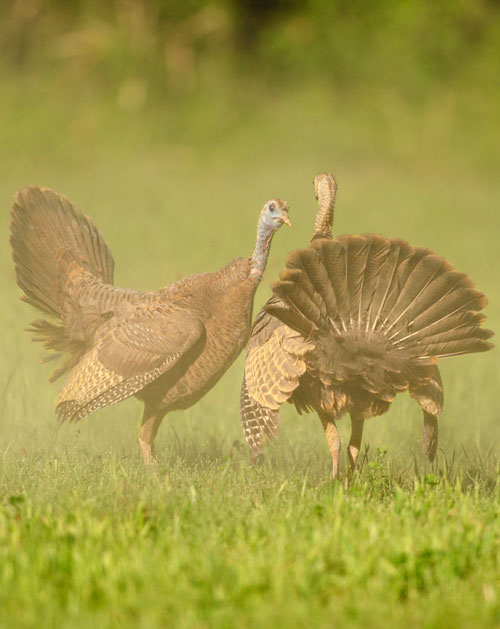
3. From Being Social to Anti-social
Turkey hens can make mean girls look sweet, especially during the nesting period. The pair of nesting hens pictured visited a food plot daily to feed and dust. On April 19th, after dust bathing, one passed too close for the other’s comfort. Suddenly the pair erupted in a cloud of dust and posturing. Gone were the days of congenial and tight knit hen groups. The nesting urge shifts a hen’s focus to establishing a nest in good cover, getting to and from it safely each day and surviving a dangerous and long incubation period. They become less social and more secretive for good reason. The solitary hen pictured used a fence break among other entrance and exit routes at a frequently visited feeding area.
Dr. Chamberlain: Smaller social groups of hens start to separate as the time to nest approaches. We go from seeing eight to ten hens together to only seeing three or four, and then hens transition from days of being gregarious and social to being the opposite. Once hens begin laying eggs at their nest site, they spend time each day traveling to and from that nest - and they will also spend short bouts of time incubating the eggs before the clutch is complete. At this point, they’re spending most of their day alone and will only associate with other hens at feeding sites - otherwise, hens are loners once nesting season begins.
“BECOMING A GAMEKEEPER IS NOT JUST THE BEST WAY TO PRODUCE GREAT HUNTING… IT’S THE BEST LIFE! SUBSCRIBE TODAY.”
Final Thoughts
Habitat quantity and quality are two of several important influencers that determine where flocks establish spring ranges. Gamekeepers can help with extra emphasis on winter to spring management efforts geared toward hen survival, nest success and poult survival.

